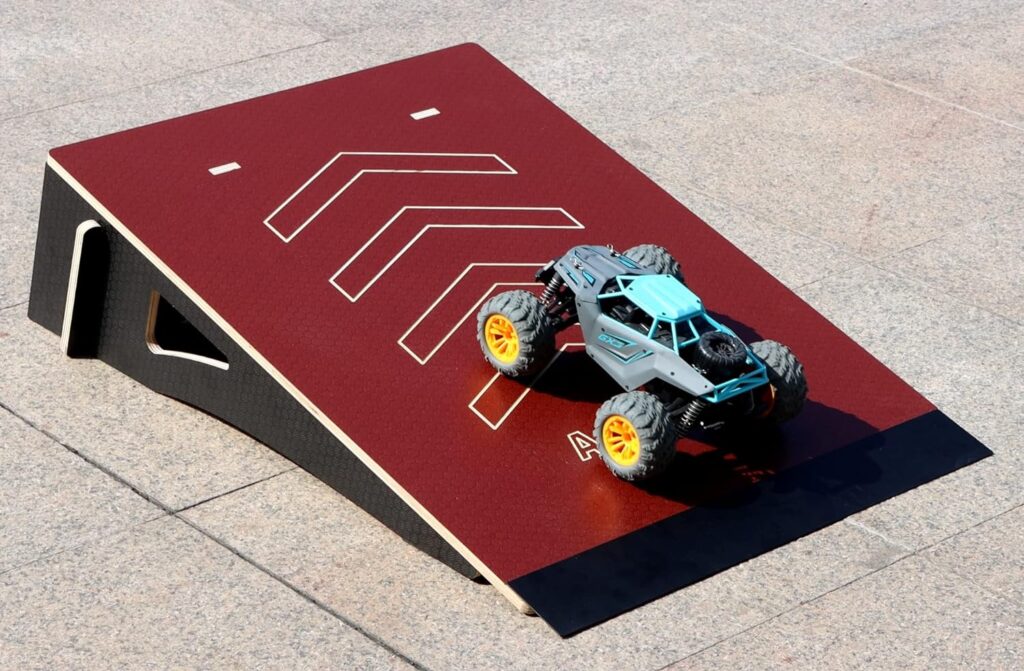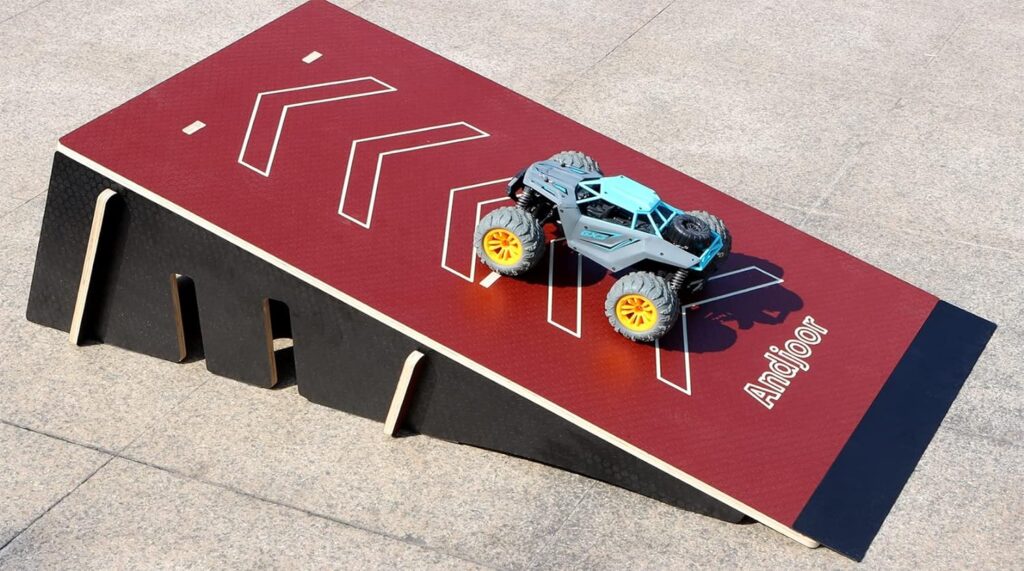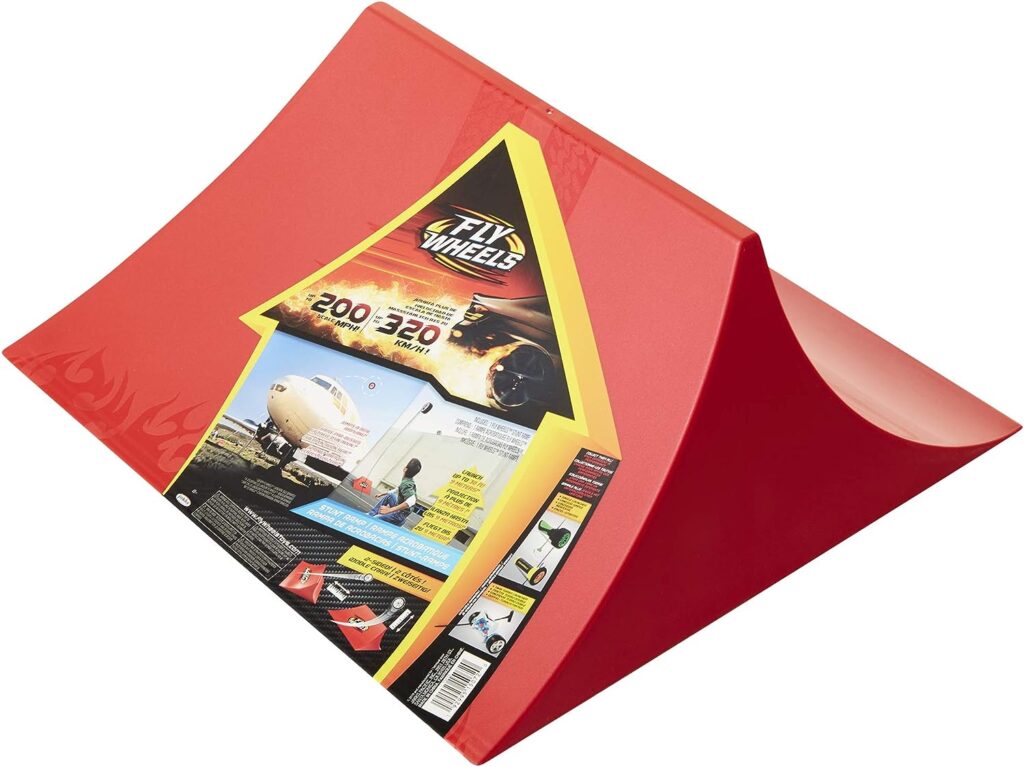
RC cars are already exciting toys capable of impressive speed and stunts fresh out of the box. But for thrill-seeking drivers looking to push their cars’ capabilities to the limit, nothing beats the adrenaline rush of catching huge air off ramps and performing outrageous aerial stunts. RC car ramps open up a whole new dimension of radical jumps and flips that will have your pulse pounding. In this guide, we’ll cover everything you need to know about RC car ramps, from the common types and proper setup to the techniques for sticking insane landings.
Whether you’re looking to maximize hang time, pull off backflips, or stick daring corkscrew spins, ramps are the secret to unlocking the full potential of your RC car. With the tips in this guide, you’ll learn how to hit those ramps like a pro and become the envy of all drivers at the RC track or bash spot.
What are RC car ramps and why use them?
RC (remote control) car ramps are structures used to launch RC cars into the air to perform jumps and stunts. Ramps allow you to get big air with your RC car for exciting jumps and add a whole new dimension to RC racing and stunt driving.
There are a few common types of RC car ramps. Straight ramps are the simplest style – they feature an inclined slope that sends cars up a ramp and into the air. Curve ramps have a bend in them to enable stunts like frontflips. Step-up ramps feature a flat landing zone elevated above the starting point to maximize hang time in the air. Other specialty ramps include loops, corkscrews, and massive dirt jumps.
RC car ramps are typically constructed from materials like wood, plastic, or lightweight metal. Plywood is a popular DIY choice for building sturdy, rigid ramp structures. PVC piping can also be used to build ramp frameworks. Launch ramps are often coated in skateboard grip tape to enable tires to grip and launch upwards from the ramp surface. Some heavy duty ramps are built from steel or aluminum as well.
Using ramps opens up many possibilities for exciting RC car stunts and races. Launching off ramps lets you catch huge air, performing tricks like frontflips, backflips and spins for style points. Racing over scattered ramp set-ups tests driving skills and reflexes. Ramps can be combined into circuits with loops, jumps and curves for motorsports action. Big air also lets you experiment with new suspension and shock absorber settings for smooth landings. Overall, ramps bring out capabilities in RC cars that you just can’t experience running on flat ground. Any RC car fan looking for a thrill should give ramp driving a try!
How do you choose the right RC car ramps?
Choosing the right RC car ramps involves considering factors like your car’s specifications, the types of jumps you want to make, and safety precautions. Taking the time to select appropriate ramps will ensure optimal performance and exciting stunts.
The steepness and size of an RC car ramp depends on the speed and weight of your car. Steeper ramp angles produce more height but require faster speeds. Larger, heavier cars will require longer, wider ramps to safely launch into the air. Measure your car’s speed and wheelbase, then calculate the ramp length needed to achieve your desired jump height. As a general rule, aim for ramp lengths that are 3-4 times your car’s wheelbase.
The size and maximum speed of your RC car will dictate which ramps it can handle. Smaller 1:24 scale cars don’t need big ramps and can use small dirt kickers. Bigger 1:8 scale racing trucks and buggies have higher top speeds and can tackle larger dirt jumps. Make sure to match your car’s capabilities to the ramp, or you risk unstable launches and crashes.
When selecting ramps, consider where and how you’ll use them. Indoor ramps for stunts need more grip and shallower angles. Outdoor solid ramps can use steeper angles for big air. Portable foldable ramps are great for taking to different locations. Also check if your car’s shocks and suspension can handle hard landings off tall ramps.
Safety should be your top concern. Only drive off ramps at speeds your car can handle to avoid flipping. Check for sturdy, smooth ramp construction with no cracks or bumps that could cause crashes. Set up ramp spots away from walls or objects your car could collide with. Wear eye protection when driving off ramps as well. Taking precautions will let you thrill-seek safely.
What are the Best RC Car ramps?
Ramps take RC car driving to the next level, enabling you to catch massive air and perform outrageous stunts from the comfort of the ground. But not all ramps are created equal – the right ones for your car and skills are key to nailing those sick jumps safely. Read on for the best RC car ramp recommendations across multiple categories to take your stunt driving game sky high!
Andjoor RC car ramp
The Andjoor Skateboard Ramp is a versatile, heavy-duty skate ramp designed for scooters, bikes, skateboards, and RC cars. Made from 9-ply birch wood and coated in a textured skid-resistant finish, this ramp provides a stable launch platform for getting airborne. Spanning an impressive 23.6 inches wide, the ramp can accommodate multiple riders at once and has a tested weight capacity of up to 400 pounds, making it suitable for adults and kids. The kicker ramp features an ergonomic curve profile to enable smooth transitions, along with extended 32 inch wide platforms on both the approach and landing sides.
Non-slip rubber feet prevent sliding during use. Disassembles easily for portable transport and storage. With its sturdy build, grippy surface, and expansive size, the Andjoor Skate Ramp is ideal for backyard stunt sessions, skate parks, events, or extreme sports training. Riders report getting decent air time off the ramp along with endless hours of fun. Just be sure to use safety gear when ramp jumping. Overall, it provides a thrilling ramping experience for skaters, bikers, scooter riders and RC enthusiasts alike.
RIZE ramp for RC cars
The RIZE Single Ramp is a high-impact polymer wedge ramp built for portable skate park thrills. With reinforced construction, it provides a stablelaunching pad for bikes, skateboards, scooters and RC cars. The durable polymer build makes it lightweight at just 15 lbs yet able to support over 125 lbs in dynamic weight. Its textured surface and rubber grip feet prevent slipping, while the smooth edges enable big air. Measuring 48 x 24 x 18 inches, the ramp features an optimized 30 degree incline to give riders ample speed for ollies, jumps and aerial tricks. The modular interlocking design allows hassle-free setup without tools, and packs away easily for transport.
Ideal for ages 8 and up, the RIZE Single Ramp is approachable for beginners yet rugged enough for advanced riders. From driveways to backyards, it brings skatepark-style sessions to any outdoor spot. The high-traction surface and stable base provide a safe practice zone for honing skills. For an easy introduction to ramp stunts and vert, the sturdy yet portable RIZE Single Ramp has teens and kids covered.
Fly Wheels ramp
The Fly Wheels Ramp takes the extreme stunt driving of Fly Wheels cars to new heights. This heavy-duty folding ramp enables Fly Wheels vehicles to catch massive air from standard launchers. Made from durable plastic, it features a skid-resistant surface and measures over 5 feet long when extended. The two-sided design offers versatility – one incline optimized for vertical launches up to 30 feet high, the other engineered for horizontal distance jumps. Pair it with the Fly Wheels Launchers and Ripcords for acrobatic stunts and tricks.
With the rugged build quality, high-traction coating, and smooth entry/exit angles, the Fly Wheels Ramp provides a stable launchpad. It easily handles the high speeds of Fly Wheels cars, allowing them to rip over 200 scale MPH before jumping. When not in use, the ramp folds down into a compact form for storage. For the ultimate in intense stunt performance with Fly Wheels vehicles, this extreme ramp pushes the boundaries and creates an exhilarating ride limited only by your imagination. Just be sure to use caution and wear safety gear when attempting dangerous jumps and stunts.
Where should you set up RC car ramps?
When setting up RC car ramps, choosing the right location is key for maximizing enjoyment and safety. The terrain, amount of space available, and whether you’re driving indoors or outdoors all need to be considered when selecting a ramp spot.
Outdoor locations like open fields, empty parking lots, or dirt trails provide large areas suitable for setting up ramps. You’ll want a long flat approach zone to get speed before hitting the ramp. Try to avoid rough, bumpy terrain that could affect your launch angle. Grass or packed dirt works best. Digging out a dirt jump at the landing spot lets you shape the transition smoothly.
Indoors, set up ramps in large, clear spaces like warehouses, gymnasiums, or rec centers. Concrete or wood floors allow cars to gain speed for launching off ramps. Make sure ceilings are high enough that cars won’t hit them at peak height. Indoors, grip tape, foam, or carpets will be needed on the ramp and landing to provide traction.
The amount of space needed depends on your planned setup. A simple single straight ramp just requires enough room for a lead-in and landing zone. For a circuit of multiple ramps and features like loops, you’ll need an expansive space. Always keep an extra buffer zone around ramps in case jumps go awry or cars veer off course.
Consider if your location allows you to leave ramps set up or if they’ll need to be broken down after each session. Permanent outdoor dirt jumps are easiest, while indoor modular ramps offer flexibility. Also check if you need permission before building ramps on any property.
With some planning, you can find great ramp locations from backyards to racetracks. Evaluate your space and needs, and choose spots suited for your RC car and desired setups. Then get launching off those ramps and enjoy the air time!
How do you build your own custom RC car ramps?
Building your own custom RC car ramps allows you to create unique setups tailored to your car and style. With some DIY know-how, you can construct awesome ramps without breaking the bank.
Many household materials like wood, PVC pipe, cardboard, and plastic can be repurposed to build budget-friendly ramps. Plywood or 2x4s are very sturdy for constructing the ramp framework. Corrugated plastic sheets from home improvement stores can provide a smooth ramp surface. PVC piping cut in half lengthwise forms a rounded ramp profile. Even cardboard duct taped together can make temporary ramps.
Use sturdy construction techniques like cross bracing and angle supports to make ramps rigid and prevent twisting or bouncing during launches. Deck screws provide more strength than nails when joining ramp pieces. Apply grip tape, anti-slip spray paint, or glue sandpaper to the surface for traction. Smooth any joints and edges so cars can handle the transition.
You can get creative with features like banked curves, multiple ramps, and loop-de-loops. Cut plywood in curved shapes and join for banked turns. Stack two ramps close together as a step-up jump. Make loop shapes from PVC or flexible materials like plastic or thin plywood. Place obstacles like cones between ramps to slalom through. Test any complex ramps at slow speeds first.
Follow basic safety principles, like avoiding steep unsafe angles and play-testing first. Starting with simple designs and working your way up is wise. Custom ramp building takes some trial and error, but the payoff is having unique ramps tailored to you. Get creative with household items and build the RC racetrack of your dreams!
How do you perform awesome jumps and stunts off RC car ramps?
Using RC car ramps opens up a whole new world of radical jumps and insane midair stunts. With some practice and technique, you can become an RC jumping master.
To maximize height and hang time off ramps, adjust your approach angle and speed. A straight, head-on approach works best. Go full throttle just before the ramp lip to launch upwards. Lower your car’s body and stiffen the suspension right before jumping.
Landing smoothly is an essential skill and takes finesse. As you leave the ramp, pull back slightly on the throttle and tilt the car up to level it. Extend the suspension and absorb the impact with your shocks, keeping the car flat. Apply light braking just before touching down to settle the wheels.
Performing stunts in the air amps up the excitement! Flips require fast throttle bursts to rotate quickly after takeoff. Turn hard one way, then reverse the steering mid-air. Spins can be done by continuously cranking the wheel in one direction through the jump. For corkscrew spins, keep the wheel turned while flipping.
It takes practice to stick these aerial stunts consistently. Start with small jumps to get a feel for your car’s handling. Slowly work up to bigger air and more complex maneuvers. Tweak suspension settings and add stiffer springs to increase stability. With enough dirt-flying attempts, you’ll pull off those jaw-dropping aerial stunts.
Ramp jumping requires fast reflexes and car control instincts. Use ramps wisely to avoid crashes. With the right techniques, you can achieve ridiculous airtime and land safely to amaze your RC friends.
Enjoyed this guide of RC car ramps? Then be sure to check out our other RC Rating guides.


